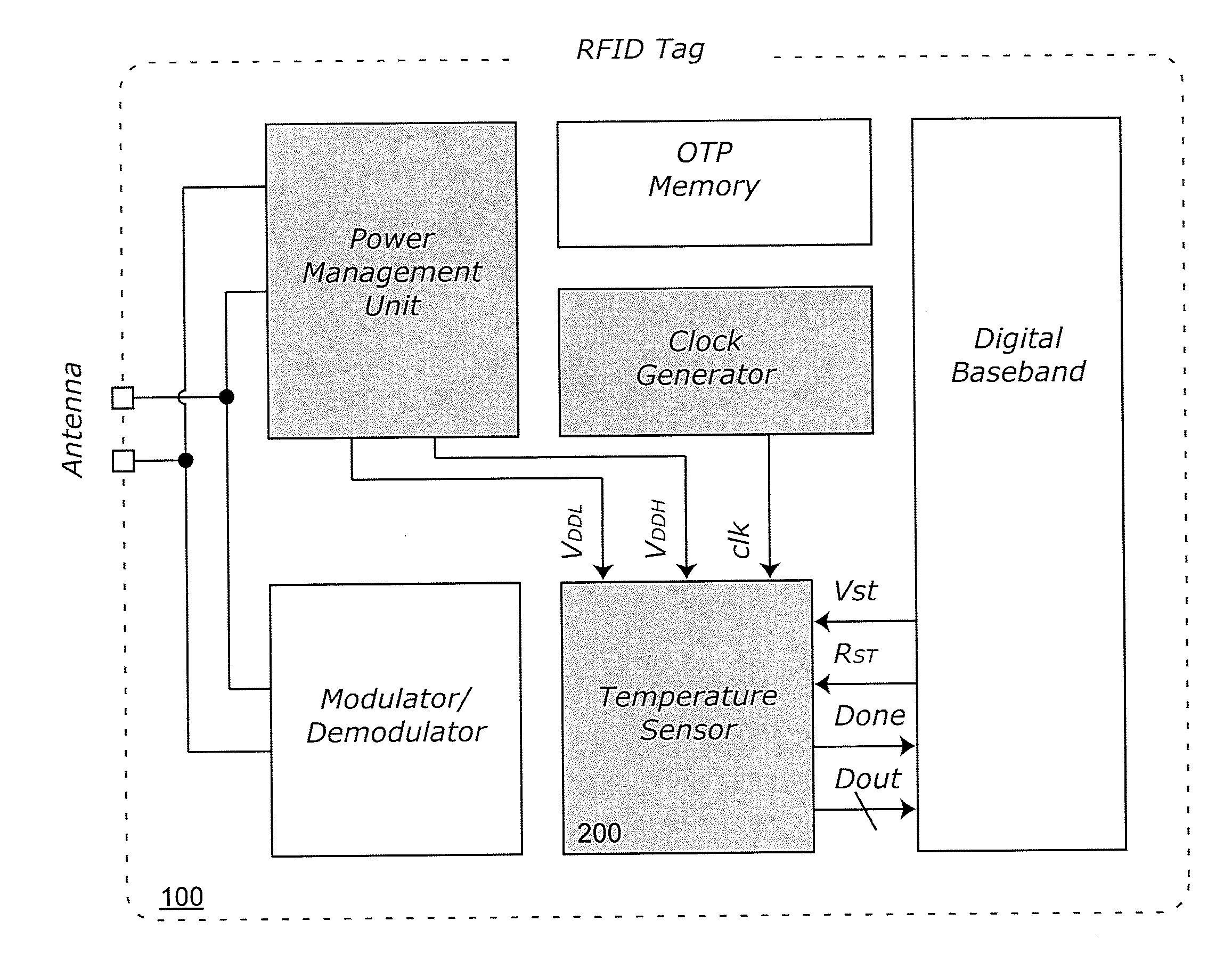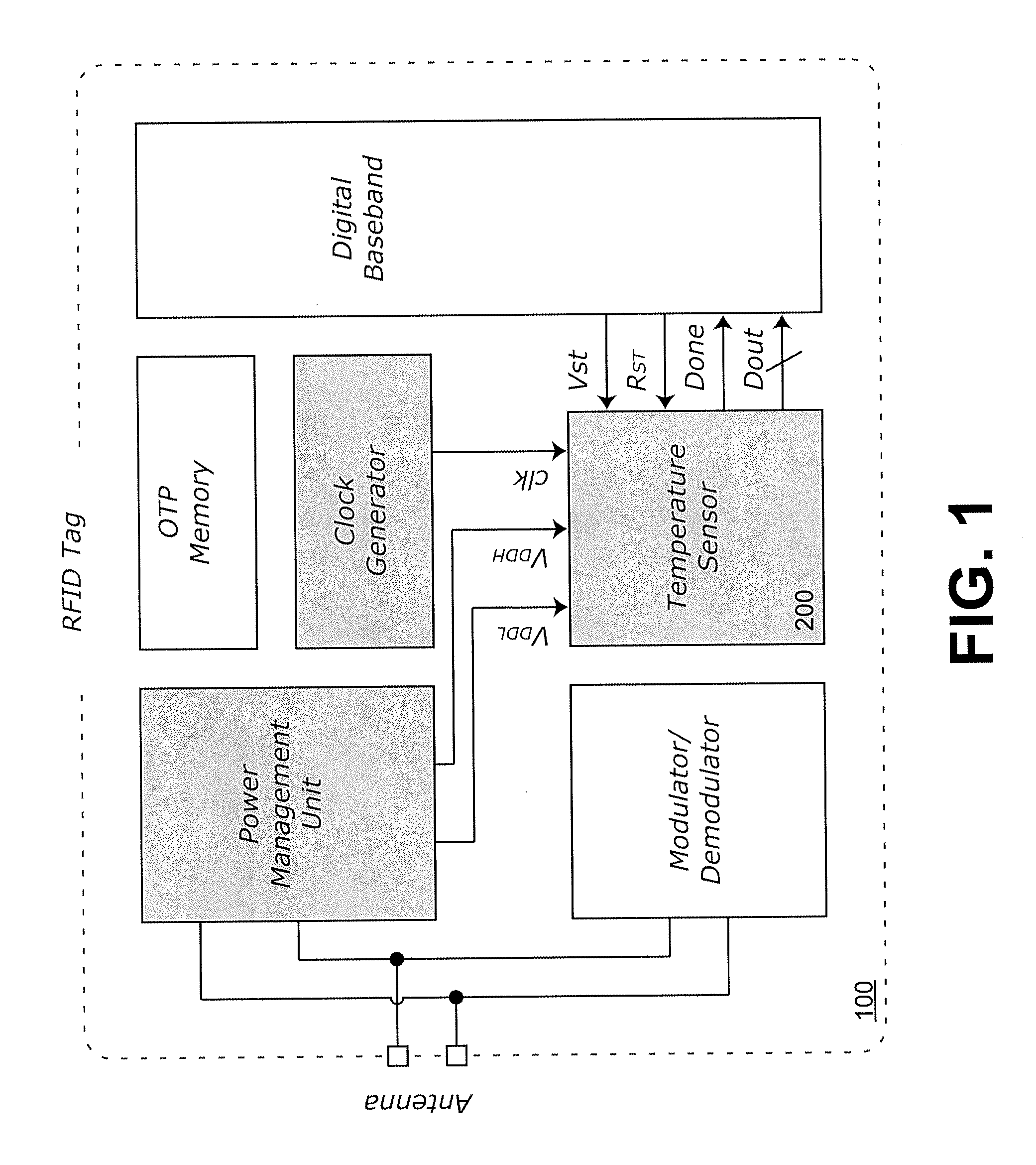Low voltage low power CMOS temperature sensor circuit
a temperature sensor and low-power technology, applied in the field of low-voltage low-power cmos temperature sensor circuits, can solve the problems of increasing circuit complexity and chip area, not suitable for passive rfid tag applications, and reducing power consumption and snr (signal-to-noise ratio) improvement, and reducing power and area overhead
- Summary
- Abstract
- Description
- Claims
- Application Information
AI Technical Summary
Benefits of technology
Problems solved by technology
Method used
Image
Examples
Embodiment Construction
[0029]With reference to FIG. 1, a block diagram is depicted showing components of an RFID tag 100 that may be used with embodiments of the present invention. The RFID tag 100 generally includes an antenna, a power management unit (PMU), a modulator / demodulator, an OTP (one-time programmable) memory, a clock generator, a temperature sensor, and a digital baseband. The PMU rectifies incoming RF signals to generate supply voltages for the other building blocks, including the temperature sensor, and provides analog biasing and a power-on-reset (POR) signal for analog and digital modules, respectively. The clock generator produces the system clock for synchronization as well as sensor signal quantization. The modulator changes the tag's input impedance to control whether the incoming power from the reader is absorbed by the tag or reflected to the reader for tag data transmission, while the demodulator removes the carrier frequency to recover the data symbols. The digital baseband is uti...
PUM
 Login to View More
Login to View More Abstract
Description
Claims
Application Information
 Login to View More
Login to View More - R&D
- Intellectual Property
- Life Sciences
- Materials
- Tech Scout
- Unparalleled Data Quality
- Higher Quality Content
- 60% Fewer Hallucinations
Browse by: Latest US Patents, China's latest patents, Technical Efficacy Thesaurus, Application Domain, Technology Topic, Popular Technical Reports.
© 2025 PatSnap. All rights reserved.Legal|Privacy policy|Modern Slavery Act Transparency Statement|Sitemap|About US| Contact US: help@patsnap.com



